National Contest Awards
 The winner is currently selected each year from the winners of the Open, 18-Meter, 15-Meter, Standard and US Club Class National Championships. The pilot with the highest percentage of the maximum cumulative score possible for each competition is the winner. First awarded in 1992. The Soaring Society of America’s most prestigious competition award, also known as “Sailplane Racing’s Top Gun” award, the Hatcher Trophy was created in memory of Ron Hatcher a well-known contest pilot. An exquisite composition in highly polished titanium steel of an arctic tern in flight by the late Peter Dandridge. The subject is particularly appropriate to the purpose of the award because of the species’ incredible soaring ability, migrating annually from pole to pole in soaring flight.
The winner is currently selected each year from the winners of the Open, 18-Meter, 15-Meter, Standard and US Club Class National Championships. The pilot with the highest percentage of the maximum cumulative score possible for each competition is the winner. First awarded in 1992. The Soaring Society of America’s most prestigious competition award, also known as “Sailplane Racing’s Top Gun” award, the Hatcher Trophy was created in memory of Ron Hatcher a well-known contest pilot. An exquisite composition in highly polished titanium steel of an arctic tern in flight by the late Peter Dandridge. The subject is particularly appropriate to the purpose of the award because of the species’ incredible soaring ability, migrating annually from pole to pole in soaring flight.
 Awarded yearly to the Junior National Champion. The Junior National Champion is the junior pilot who achieves the highest percentage of the maximum possible score at any US National Soaring Championship. First awarded in 2001. The Rudolf W. Mozer Trophy is awarded annually to the Junior National Champion. The Junior National Champion has been declared since 2001, and the Trophy was inaugurated in 2003. The trophy honors Eaton Trophy winner Rudy Mozer and was endowed by Rudy’s children: Eric, Norman, Peter, and Richard. The central bronze artwork of the trophy was created by Bob Barber, and donated by Richard Hall to the Collegiate Soaring Association, and subsequently via the CSA (an Affiliate Member) to the SSA. The present trophy was made possible thanks to John Campbell and Eric Mozer, who crafted a substantial base with winner plaques.
Awarded yearly to the Junior National Champion. The Junior National Champion is the junior pilot who achieves the highest percentage of the maximum possible score at any US National Soaring Championship. First awarded in 2001. The Rudolf W. Mozer Trophy is awarded annually to the Junior National Champion. The Junior National Champion has been declared since 2001, and the Trophy was inaugurated in 2003. The trophy honors Eaton Trophy winner Rudy Mozer and was endowed by Rudy’s children: Eric, Norman, Peter, and Richard. The central bronze artwork of the trophy was created by Bob Barber, and donated by Richard Hall to the Collegiate Soaring Association, and subsequently via the CSA (an Affiliate Member) to the SSA. The present trophy was made possible thanks to John Campbell and Eric Mozer, who crafted a substantial base with winner plaques.
 Awarded each year to the 1-26 Soaring Champion, as determined at the annual 1-26 Championships. First awarded in 1965. This is an international event; pilots from any nation are invited to participate. The Marion C. Cruce Trophy is a large sterling silver punch bowl (with tray and cups) which was donated to the 1-26 Association in 1966 by Mr. and Mrs. Cruce. This perpetual trophy is awarded each year to the 1-26 Champion, the highest-scoring individual entry in the 1-26 Championships.
Awarded each year to the 1-26 Soaring Champion, as determined at the annual 1-26 Championships. First awarded in 1965. This is an international event; pilots from any nation are invited to participate. The Marion C. Cruce Trophy is a large sterling silver punch bowl (with tray and cups) which was donated to the 1-26 Association in 1966 by Mr. and Mrs. Cruce. This perpetual trophy is awarded each year to the 1-26 Champion, the highest-scoring individual entry in the 1-26 Championships.
 Awarded yearly to the pilot scoring the fastest task speed during the 15-Meter Class National Championship. First awarded in 1981. This trophy was commissioned and endowed by a group of soaring pilots in 1981 to commemorate the memory of Joe Giltner following his death. Mr. Giltner, from Chester, South Carolina, was a dedicated soaring instructor and an outstanding competitor. For the trophy his friends chose a bronze sculpture of an osprey about to take flight to symbolize Joe’s love of flying and especially soaring. The trophy remains in the custody of the winner for one year and then is passed on to the next winner. Each recipient is also given a handsome certificate to commemorate the award.
Awarded yearly to the pilot scoring the fastest task speed during the 15-Meter Class National Championship. First awarded in 1981. This trophy was commissioned and endowed by a group of soaring pilots in 1981 to commemorate the memory of Joe Giltner following his death. Mr. Giltner, from Chester, South Carolina, was a dedicated soaring instructor and an outstanding competitor. For the trophy his friends chose a bronze sculpture of an osprey about to take flight to symbolize Joe’s love of flying and especially soaring. The trophy remains in the custody of the winner for one year and then is passed on to the next winner. Each recipient is also given a handsome certificate to commemorate the award.
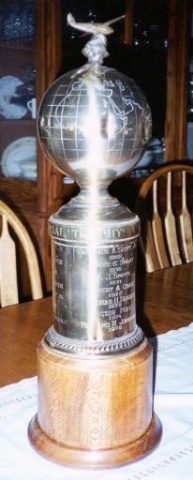 Awarded yearly to the pilot scoring the fastest task speed during the Open Class National Championship. First awarded in 1955. The trophy was presented to the Soaring Society of America in 1955 by the Larissa Stroukoff Memorial Fund, a fund set up by the late Larissa Stroukoff, wife of Michael Stroukoff, President of Stroukoff Aircraft Corporation, to assist young people in their aviation education and interests. The trophy, which stands 19.5 inches tall, was designed by Mr. Michael Stroukoff himself, and is executed in silver on an ebony base. The trophy is perpetual, being held by each recipient until the next award. The winners’ names with dates are engraved on the trophy. The achievement during the Nationals for which the Trophy was awarded originally was the best out-and-return flight. For the first few years when there were still pilot-selected tasks.
Awarded yearly to the pilot scoring the fastest task speed during the Open Class National Championship. First awarded in 1955. The trophy was presented to the Soaring Society of America in 1955 by the Larissa Stroukoff Memorial Fund, a fund set up by the late Larissa Stroukoff, wife of Michael Stroukoff, President of Stroukoff Aircraft Corporation, to assist young people in their aviation education and interests. The trophy, which stands 19.5 inches tall, was designed by Mr. Michael Stroukoff himself, and is executed in silver on an ebony base. The trophy is perpetual, being held by each recipient until the next award. The winners’ names with dates are engraved on the trophy. The achievement during the Nationals for which the Trophy was awarded originally was the best out-and-return flight. For the first few years when there were still pilot-selected tasks.
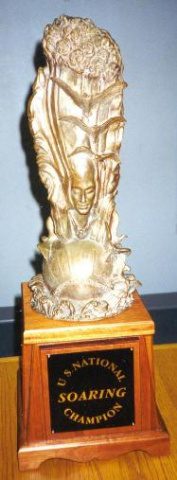 Awarded yearly to the winner of the Open Class National Championship. First awarded in 1947. The trophy, symbolic of thermal soaring flight, is a bronze casting mounted on a mahogany base, and is 241/2 inches high overall. It was presented to SSA in 1947 by Mrs. Allaire du Pont in memory of her husband, Richard C. du Pont, U.S. National Soaring Champion in 1934, 1935, and 1937, who died in the crash of an experimental military glider September 12, 1943. The trophy is perpetual and is passed from Champion to Champion. The winners’ names with dates are engraved on metal plates attached to the pedestal. In addition, each winner receives a bronze medallion bearing a bas-relief representation of the trophy for his permanent possession. With the trophy, Mrs. du Pont gave the Soaring Society 20 medallions.
Awarded yearly to the winner of the Open Class National Championship. First awarded in 1947. The trophy, symbolic of thermal soaring flight, is a bronze casting mounted on a mahogany base, and is 241/2 inches high overall. It was presented to SSA in 1947 by Mrs. Allaire du Pont in memory of her husband, Richard C. du Pont, U.S. National Soaring Champion in 1934, 1935, and 1937, who died in the crash of an experimental military glider September 12, 1943. The trophy is perpetual and is passed from Champion to Champion. The winners’ names with dates are engraved on metal plates attached to the pedestal. In addition, each winner receives a bronze medallion bearing a bas-relief representation of the trophy for his permanent possession. With the trophy, Mrs. du Pont gave the Soaring Society 20 medallions.
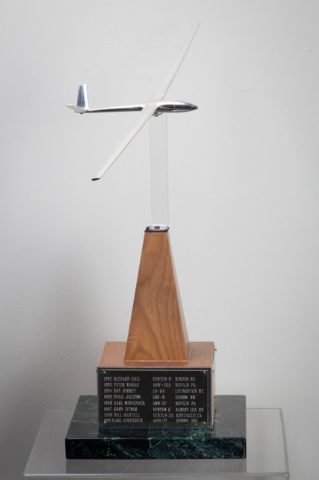 Awarded yearly to the winner of the 15-Meter National Championship. First awarded in 1976. In 1977 Richard and Angelike Schreder presented the trophy to the SSA to support the 15-Meter Class. This class allows for the incorporation of all present and future performance and technological improvements without arbitrary restrictions. The Schreder’s also provided a $5,000 endowment to provide income for engraving, maintaining, and transporting the trophy. The trophy features a polished-metal model of the HP-18 sailplane (designed by Richard Schreder) carved from solid aluminum. It is mounted on a base of American black walnut and inscribed with the names of the yearly winners.
Awarded yearly to the winner of the 15-Meter National Championship. First awarded in 1976. In 1977 Richard and Angelike Schreder presented the trophy to the SSA to support the 15-Meter Class. This class allows for the incorporation of all present and future performance and technological improvements without arbitrary restrictions. The Schreder’s also provided a $5,000 endowment to provide income for engraving, maintaining, and transporting the trophy. The trophy features a polished-metal model of the HP-18 sailplane (designed by Richard Schreder) carved from solid aluminum. It is mounted on a base of American black walnut and inscribed with the names of the yearly winners.
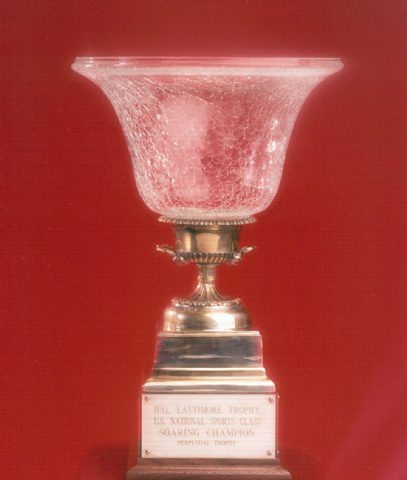 Awarded yearly to the winner of the Sports Class National Championship. First awarded in 1999. The trophy is a clear crackle glass loving cup, 18 inches tall, set to a pewter loving cup with a square base that is set in a wooden base.
Awarded yearly to the winner of the Sports Class National Championship. First awarded in 1999. The trophy is a clear crackle glass loving cup, 18 inches tall, set to a pewter loving cup with a square base that is set in a wooden base.
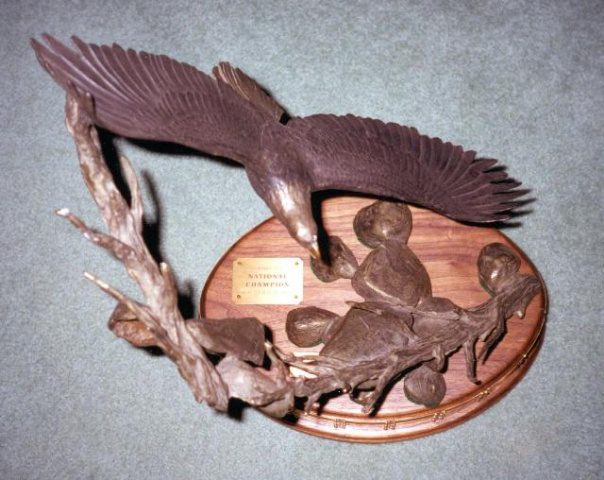 Awarded yearly to the winner of the Standard Class National Championship. First awarded in 1970. The trophy is a free-form bird sculpture on an oval base created by Mark Hopkins.
Awarded yearly to the winner of the Standard Class National Championship. First awarded in 1970. The trophy is a free-form bird sculpture on an oval base created by Mark Hopkins.
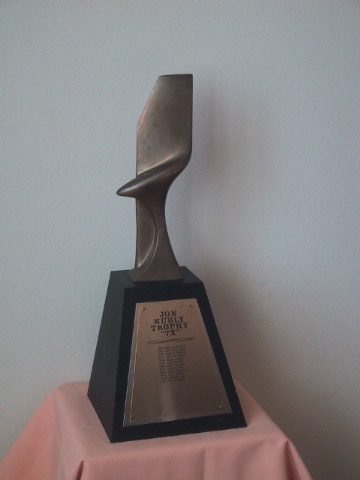 Awarded yearly to the pilot scoring the fastest task speed during the Standard Class National Championship. First awarded in 1990. This trophy was first awarded in Starting in 2016, the speed is calculated based on the applicable handicap.
Awarded yearly to the pilot scoring the fastest task speed during the Standard Class National Championship. First awarded in 1990. This trophy was first awarded in Starting in 2016, the speed is calculated based on the applicable handicap.
 Awarded yearly to the winner of the 18-Meter National Championship. First awarded in 2011.
Awarded yearly to the winner of the 18-Meter National Championship. First awarded in 2011.
 Awarded yearly to the pilot with the highest speed as determined at the 18-Meter National Championship. The trophy was endowed by the Ittner Family Fund in honor of Nelson Ittner.
Awarded yearly to the pilot with the highest speed as determined at the 18-Meter National Championship. The trophy was endowed by the Ittner Family Fund in honor of Nelson Ittner.
 Awarded yearly to the US Club Class Champion as determined at the US National Club Class Championships starting in 2018.
Awarded yearly to the US Club Class Champion as determined at the US National Club Class Championships starting in 2018.
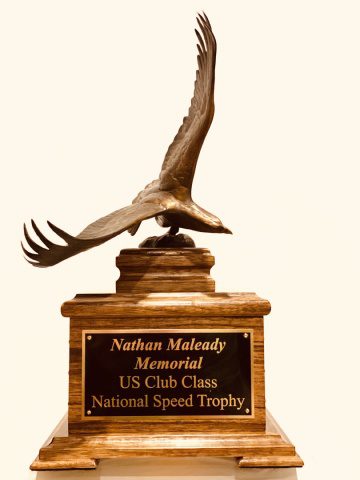 Awarded yearly to the pilot with the highest handicapped speed as determined at the US National Club Class Championship starting in 2018.
Awarded yearly to the pilot with the highest handicapped speed as determined at the US National Club Class Championship starting in 2018.
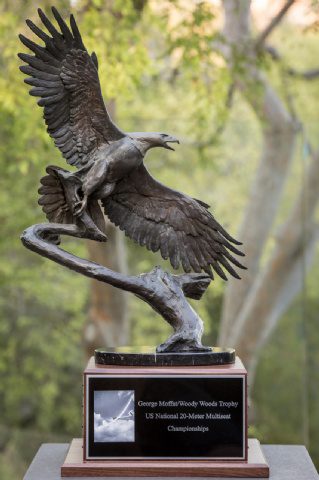 Awarded yearly to the winners of the US National 20 Meter Multi-Seat Championships starting in 2018.
Awarded yearly to the winners of the US National 20 Meter Multi-Seat Championships starting in 2018.
Other Contest Awards
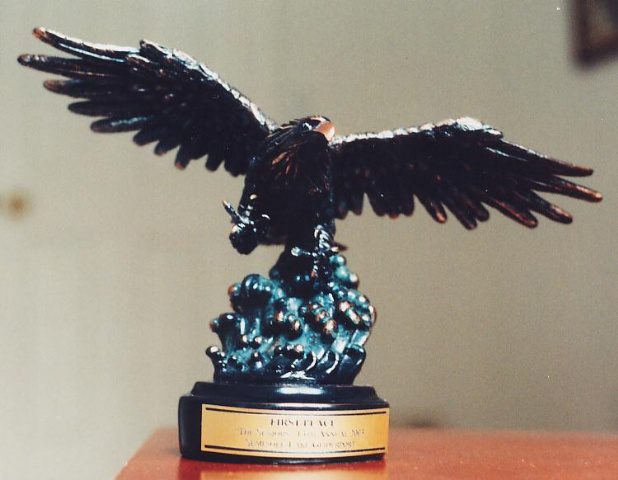 This trophy is awarded to the winner of the US Senior Championships.
This trophy is awarded to the winner of the US Senior Championships.
Soaring Performance Awards
Subsequently, in 1957, the SSA Directors, with Paul’s assent, changed the provision from launching other than airplane tow to “any type of launching other than at the Nationals.” Lewin B. Barringer was a former General Manager of SSA and holder of a world soaring distance record made from an auto-towed launch. He was lost on January 24, 1943, during World War II, on a flight from the U.S. to North Africa, while serving as a Major in the Army Air Force in connection with glider activities.
Applicants for the Lewin B. Barringer Memorial Trophy shall submit an SSA Application to the SSA on or before December 31st of the year for which the flight is claimed, a duly authenticated record of a qualifying flight made during the year to be eligible for consideration. Authentication in this case shall conform to the FAI rules for badge distance flights. If a qualifying flight is done in a multi-place glider both the Pilot and the Passenger/Copilot may apply for the Trophy.
- Straight Distance to a Goal
- Out & Return Distance
- Triangle Distance
- Distance Using Up to 3 Turnpoints
 The Henry Combs Perpetual Trophy was founded on April 15, 1995, to honor Henry Combs, an individual who in 1998 completed his 200th straight-out diamond flight. Henry Combs continues to inspire glider pilots and encourage crew members to this day. The founders hope that this award will carry forth that tradition and serve to encourage glider pilots and ground crews everywhere to become active, safety-conscious participants in the sport of straight-out cross-country soaring. The Henry Combs Perpetual Trophy is awarded annually to the person or persons completing the greatest number of straight-out diamond distance glider flights during the previous year. Overseen by the 3-member Henry Combs Perpetual Trophy Board of Trustees, the 15- member Henry Combs Perpetual Trophy Committee administers the trophy. It is the intent of the Committee that the trophy becomes a Soaring Society of America recognized award that is administered by the Henry Combs Perpetual Trophy Board of Trustees but awarded by the SSA. Eventually, the Committee wants the trophy to permanently reside at the National Soaring Museum.
The Henry Combs Perpetual Trophy was founded on April 15, 1995, to honor Henry Combs, an individual who in 1998 completed his 200th straight-out diamond flight. Henry Combs continues to inspire glider pilots and encourage crew members to this day. The founders hope that this award will carry forth that tradition and serve to encourage glider pilots and ground crews everywhere to become active, safety-conscious participants in the sport of straight-out cross-country soaring. The Henry Combs Perpetual Trophy is awarded annually to the person or persons completing the greatest number of straight-out diamond distance glider flights during the previous year. Overseen by the 3-member Henry Combs Perpetual Trophy Board of Trustees, the 15- member Henry Combs Perpetual Trophy Committee administers the trophy. It is the intent of the Committee that the trophy becomes a Soaring Society of America recognized award that is administered by the Henry Combs Perpetual Trophy Board of Trustees but awarded by the SSA. Eventually, the Committee wants the trophy to permanently reside at the National Soaring Museum.
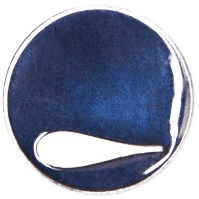
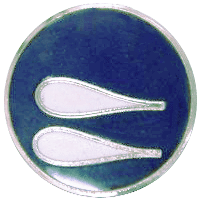
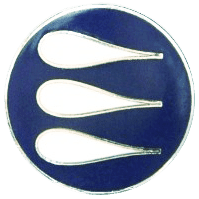
In the late 1940’s when Robert F. Symons, a mountain pilot and wave pilot pioneer, was working out of the airport at Bishop, California, he instigated a new and unique system of awards for wave flying which he called “lennie” pins. Pilots who soared to great heights in the Sierra Wave received a one-lennie pin for attaining an altitude of 25,000 to 35,000 feet, a two-lennie pin for reaching 35,000 to 40,000 feet, and a three-lennie pin for exceeding 40,000 feet.
Very early Bob recognized the excellent soaring conditions in the Owens Valley and helped organize a soaring group in 1938. As a professional pilot engaged in cloud seeding, he learned first hand of the power generated in the Sierra Wave and became well-known for his studies and lectures on mountain wave phenomena, Although his lists are incomplete, it is believed that he issued some 35 one-lennie, 16 two-lennie, 10 three-lennie pins. The awarding of these pins ceased in 1958, when Bob lost his life in a glider accident.
In 1962, Carl Burson Jr., saw one of these pins and upon learning of its history, became interested in re-establishing their issuance as a memorial after Bob Symons. In 1963, the program was re-established under the official auspices of SSA, with each new pin holder also receiving a handsome wall plaque. The pin itself is 7mm in diameter (the same size as the FAI Gold Badge) and has one, two or three white lenticular clouds set off against a blue background with a silver rim. Each pin is consecutively numbered.
If a qualifying flight is done in a multi-place glider both the Pilot and the Passenger/Copilot can apply for Lennie pins.
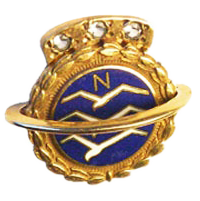 On Jan 1, 1992, The Soaring Society of America’s Board of Directors approved the World Distance Award. The purpose of the award is to promote and encourage cross-country soaring on a long term basis. The award is presented to pilots who accumulate through a series of cross-country soaring flights a total of 40,000 km, the distance around the earth. There is no time limit for accumulating the total distance.
On Jan 1, 1992, The Soaring Society of America’s Board of Directors approved the World Distance Award. The purpose of the award is to promote and encourage cross-country soaring on a long term basis. The award is presented to pilots who accumulate through a series of cross-country soaring flights a total of 40,000 km, the distance around the earth. There is no time limit for accumulating the total distance.
This award is conducted on the honor system. Turnpoints do no have to be declared prior to take off. No barograph or GPS trace is rquired. Any reported flight distance must be greater that 50 km after being corrected for the difference between start and finish altitude as stated in the Guidelines. There is no documentation to submit other than the pilots yearly distance accumulation. The distance accumulation is to be reported to the WDA Administrator when each 5,000 km level is achieved or at least the end of each year. A one time registration fee of $20 is required at the time of registration. Certificates will be awarded to participants for each 5,000 km distance level achieved distance and name of pilot will be reported in Soaring Magazine. Upon achieving 40,000 km, a ring, representing an orbit of the earth, will be made available to the pilot at a nominal cost. This ring is designed to attach to any FAI Silver, Gold, or Diamond badge.
 Century Awards, Pin and Patches. A pin and patch, featuring a white glider and cumulus on a blue background, are awarded to soaring pilots who are between the ages of 14 and 24 (inclusive) and who complete a soaring flight of: 100 km (Century I ), 200 km (Century II), or 300 km (Century III), 500 km (Century V), 1000 km (Century X). Send application and documentation for validation to SSA as if for an FAI Badge. Only one pin/patch set is awarded per flight submitted. Earning one of the Century Awards also qualifies a young pilot to apply for the Kolstad College Scholarship Grant. More information can be found here.
Century Awards, Pin and Patches. A pin and patch, featuring a white glider and cumulus on a blue background, are awarded to soaring pilots who are between the ages of 14 and 24 (inclusive) and who complete a soaring flight of: 100 km (Century I ), 200 km (Century II), or 300 km (Century III), 500 km (Century V), 1000 km (Century X). Send application and documentation for validation to SSA as if for an FAI Badge. Only one pin/patch set is awarded per flight submitted. Earning one of the Century Awards also qualifies a young pilot to apply for the Kolstad College Scholarship Grant. More information can be found here.Online Application
Service & Other Awards
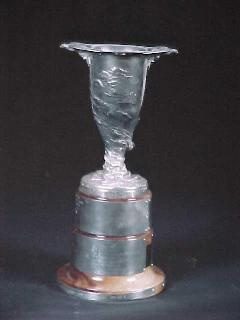 Awarded each year to a person who has made an outstanding contribution to the art, sport, or science of soaring flight in the United States, as determined by the SSA Awards Committee with the approval of the SSA Directors. It is considered SSA’s highest award. The trophy is in the form of a tall, vase-type silver cup, depicting in bas-relief soaring planes and clouds. It was presented to SSA in 1939 by Mrs. Genevieve Eaton in memory of her husband, Warren E. Eaton, founder and first president of SSA, who died in a glider accident at Miami, Florida, on December 1, 1934.
Awarded each year to a person who has made an outstanding contribution to the art, sport, or science of soaring flight in the United States, as determined by the SSA Awards Committee with the approval of the SSA Directors. It is considered SSA’s highest award. The trophy is in the form of a tall, vase-type silver cup, depicting in bas-relief soaring planes and clouds. It was presented to SSA in 1939 by Mrs. Genevieve Eaton in memory of her husband, Warren E. Eaton, founder and first president of SSA, who died in a glider accident at Miami, Florida, on December 1, 1934.
While usually awarded to a person who has made his contribution during the previous calendar year, this is not mandatory and in certain instances, the Directors have gone back in years to pick up some outstanding person not before suitably recognized. The actual trophy is kept at SSA headquarters, and the recipient is presented with a certificate attesting to the award. The presentation of the certificate is made at the awards banquet held at the time of the winter SSA Director’s meeting. Shortly after October of each year, the chairman of the SSA Awards Committee sends to all Directors a request for nominations for the award for the current calendar year. From the list thus acquired, a ballot is prepared of not more than four candidates (selected on best-qualified basis) and submitted by mail to each Director for voting. The balloting should be completed by January 1st so that the chairman of the Awards Committee may notify the recipient in confidence, in order that he may have the opportunity of being present to receive the award in person.
Director
National Soaring Museum
51 Soaring Hill Drive
Elmira NY 14903
Phone: 607-734-3128
Fax: 607-732-6745
E-mail: director@soaringmuseum.org
This award is to be given annually to an individual or group who have made a major contribution to the support of soaring competition. Charlie Spratt left us a 40 year history of growing and promoting the sport of soaring through competition. Charlie worked countless hours and years on the ground to make sure that the pilots had a place to compete, in an accurate and fair test of their skills. Charlie also worked for the SSA as a Director and on countless committees towards his goal of promoting Soaring.
In order to honor Charlie’s legacy, the Spratt Award was created to celebrate those individuals that follow in Charlie Spratt’s footsteps, by working on the ground to create the best competition soaring environment, over a significant period of time. This award is not for competing pilots, as they have their own. Any member of the SSA can make nominations for the award to the Spratt Award Committee, which reports to the Award Committee. The Spratt Award Committee will be comprised of 3 SSA members that are well versed in competition organization and who will report to the Awards committee chairperson. The Spratt award committee will then present the slate of nominees with their recommendation to the Board of Directors for voting prior to the Winter Board Meeting.
The Joseph C. Lincoln Award is awarded for the best written article, story, etc., that is published in each year. The award is by nomination and selection by the Harris Hill Soaring Club Awards Committee.
The award was established in 1952 with a contribution to SSA by the family of Paul E. Tuntland. Paul was an outstanding soaring pilot, whose work in the field of research, instruction, and competition flying contributed greatly to the science and sport of soaring. Paul died as the result of a gliding accident on September 9, 1950. The original award was in the form of an 8″x 10″ bronze plaque, presented to each recipient, but subsequently was changed to a certificate, for lack of supporting funds.
Shortly after October of each year, the chairman of the SSA Awards Committee recommends the name of a candidate or candidates for the Tuntland Award. The recommendation is submitted to the Directors for their decision by mail ballot. The balloting should be completed by Jan. 1st so that the chairman of the Awards Committee may notify the recipient in confidence, in order that he may have the opportunity of being present to receive the award in person. Award each year is not mandatory and unless a candidate is proposed by the Awards Committee, no award is made.
International Awards
 Regarded as the highest soaring award in the world, it is given to reward a particularly remarkable sporting performance in gliding or eminent services over a long period of time on behalf of gliding, to a glider pilot who has either: (a) broken an international record during the past year or, (b) made a pioneer flight during the past year (the term “pioneer flight” is understood to mean a flight which has opened up new possibilities for gliding or has shown the way for fresh progress in the techniques of gliding) or, (c) who during a long period of time has given eminent services to gliding, in the opinion of the General Council of the FAI, and is still an active glider pilot.
Regarded as the highest soaring award in the world, it is given to reward a particularly remarkable sporting performance in gliding or eminent services over a long period of time on behalf of gliding, to a glider pilot who has either: (a) broken an international record during the past year or, (b) made a pioneer flight during the past year (the term “pioneer flight” is understood to mean a flight which has opened up new possibilities for gliding or has shown the way for fresh progress in the techniques of gliding) or, (c) who during a long period of time has given eminent services to gliding, in the opinion of the General Council of the FAI, and is still an active glider pilot.
The award was established by the FAI in 1938 in honor of Otto Lilienthal, pioneer glider experimenter and pilot. Lilienthal’s gliding experiments in Germany during the years 1890-1896 demonstrated that human flight was achievable and furnished inspiration and encouragement to Wilbur and Orville Wright. Otto Lilienthal died in a gliding accident in 1896. The Lilienthal Medal is made of silver and is 7.5 cm in diameter. The obverse shows in bas-relief two birds in flight being captured by a man; the reverse bears a wreath and the words “Federation Aeronautique Internationale” surrounding a black space on which the year and name of the recipient is engraved. A Lilienthal Medal is struck each year and becomes the permanent property of the winner.
The award is now made by the General Council of the FAI only upon recommendation of the FAI Gliding Committee (CIVV) which received written proposals from the national member clubs of FAI, signed either by the president or vice president of the submitting national aero club. From the proposals the CIVV selects a candidate at one of its meetings to submit to the General Council. The award is made at the annual FAI General Conference. The U.S.A.’s candidate is submitted by the National Aeronautic Association, the U.S.’s national member club in the FAI, on the basis of a recommendation from SSA, which is obtained by the SAI Directorate nominating and then voting on nominees.
Each Aero Club which is a member of FAI may recommend a number of deserving candidates for these Diplomas each year; the U.S. is allowed three. The recipients are confirmed by the FAI Administrative Council and publicly announced and the Diplomas are awarded at the annual FAI General Conference. The U.S. National Aero Club, the National Aeronautic Association, solicits from SSA the names of persons in the field of soaring who might be considered for award of Tissandier Diplomas and periodically includes one in its recommendations to FAI.
 This medal was created by FAI in 1989. The medal is awarded annually on recommendation of the International Gliding Commission to a female glider pilot in recognition of a particularly remarkable performance in gliding during the past year or for eminent services to gliding over a long period of time.
This medal was created by FAI in 1989. The medal is awarded annually on recommendation of the International Gliding Commission to a female glider pilot in recognition of a particularly remarkable performance in gliding during the past year or for eminent services to gliding over a long period of time.
Historical
No longer awarded


